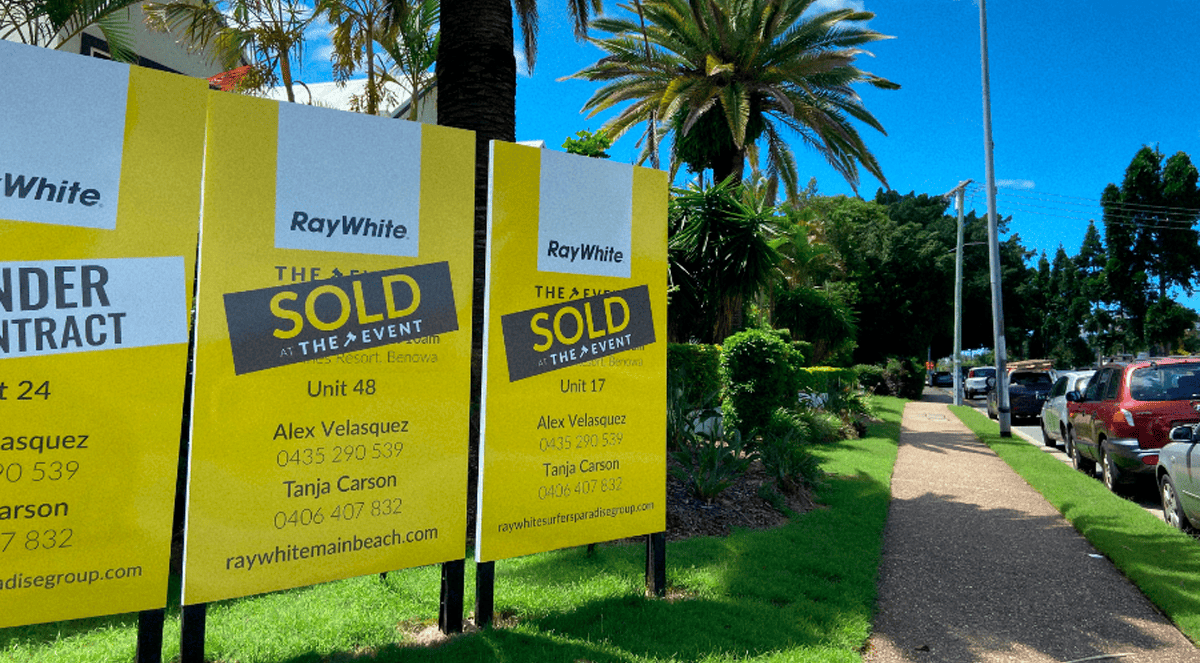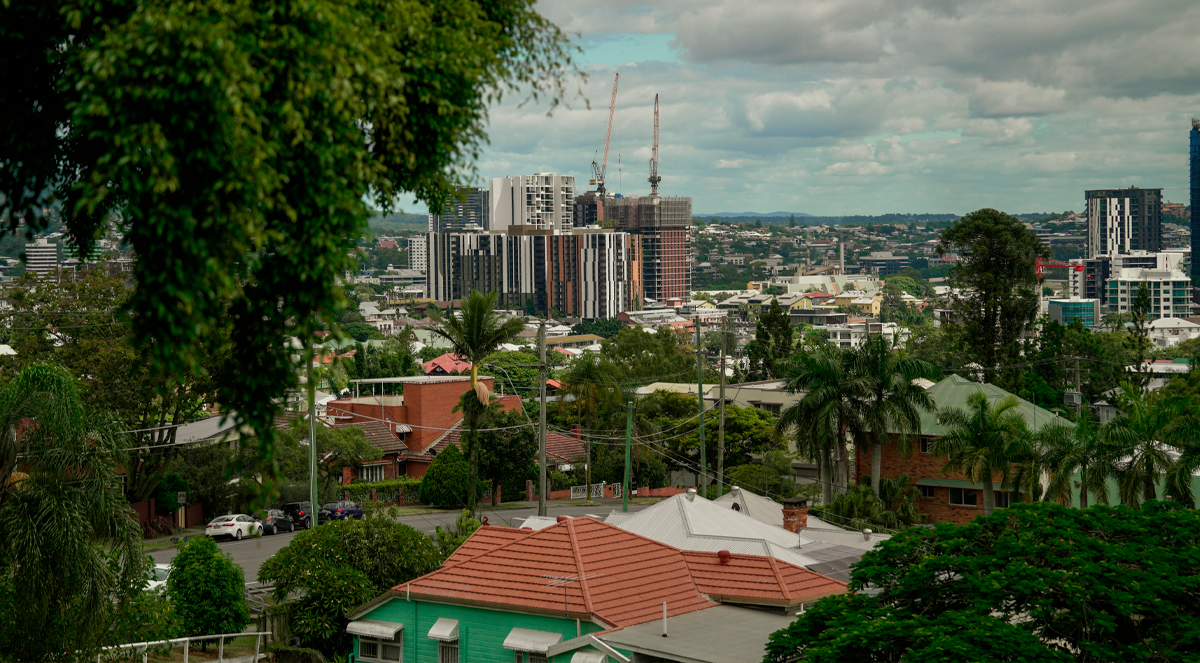Features > Property News & Insights > Market updates
Half of rental investments held for two years or less

Image from Australian Property Journal
KEY POINTS
- Half of Australian rental properties are sold within two years, with 22% sold after just 12 months, leading to significant instability for tenants
- The rental market is split between short-term investors, often younger or financially constrained, and more stable but less prevalent long-term landlords
- Experts recommend investor education, tailored financial planning, and cautious tax reforms to promote long-term rental ownership and boost housing security
A new research paper has found that half of all rental properties in Australia are only held for 2 years or less before being sold, with 22% of rental properties selling after only 12 months.
This high turnover of rental properties causes huge disruption for tenants - many who are forced to vacate their homes - and owners.
The authors say more education for would-be property investors and better risk assessments of their capacity to hold onto their investments could help provide a more stable rental market in Australia.
They also warn that big changes to tax incentives like negative gearing could discourage landlords from holding onto rental properties.
The research is important, as it underlines why would-be property investors need professional help to tailor their investments to their individual circumstances, so they can benefit from the long-term gains offered by residential investment property.
The details
A new research paper, compiled for Australia’s peak housing research body, says half of all rental properties are only held for 2 years or less before being sold.
“Modelling landlord behaviour and its impact on rental affordability” also finds 22% of rental properties sell after only 1 year.
But the research for the Australian Housing and Urban Research Institute (AHURI) also discovered that 28% of landlords provide a private rental property for 20 years or more.
This leads them to suggest that there are essentially two types of Australian landlords: short-term investors and long-term investors.
The researchers were surprised to find that younger Australians, aged 25–34 years, were more likely to buy a rental property compared to other age groups.
However, these younger landlords tended to be short-term investors and more likely to sell their property sooner.
“The evidence suggests that either they are more willing than older groups to cycle in and out of rental property investment or that they are more susceptible to becoming financially stretched and are forced to sell,” says lead author Dr Ranjodh Singh, from Curtin University in Perth.
"It only takes one or two things to increase, such as interest rates or operating expenses and that could be the, if you like, the stimulus to sell," he says.
Dr Singh and his colleagues found that a person was more likely to sell their rental investment property if they:
- are aged 45–54 years and preparing to retire
- are under 35
- are experiencing marital separation
- are unemployed
- have high mortgage costs
- have a lower income
- don’t have post-school qualifications
Landlords who keep their rental property investments for longer tend to be in their late 40s or early 50s, married, employed full-time, and have higher incomes and homeownership rates than the general population.
Dr Singh says people who are well-positioned to buy and retain rental investment properties will add to the supply of secure long-term private rental housing stock.
“However, landlords who are ill-positioned to retain their rental investments for long can disrupt the supply of private rental housing, with potentially negative impacts on tenant affordability and security,” Dr Singh says.
This obviously has serious implications for tenants, who may have to move out and look for another place to live after just finding their feet in a new location.
"It gives you that precarious feeling that you're not quite settled … you might have kids going to the school, or you might have an employment that's next door, and it seemed like a perfect fit, but now you have to move out and possibly move far away from all these things," Dr Singh told the ABC.
The fix
So how can landlords be incentivised to take a longer-term approach to property investment?
“Landlords continue investing if market conditions offer them a sufficient rent relative to their property values,” the AHURI paper says.
However, it warns governments about the impacts of policies which affect landlords, like rental freezes and calls to wind back negative gearing.
“Policy changes that freeze rental increases may, therefore, reduce the supply of private rental housing,” it says.
“As current tax incentives motivate landlords to keep rental properties, any reforms that reduce these incentives could affect decisions to hold rentals long-term.
“Tax changes that increase landlords' after-tax costs should be gradual to avoid destabilising the market,” the paper says.
The researchers say that programs offering education on retaining a property investment may benefit some landlords.
“It could support efforts to retain residential investment properties and promote the supply of long-term rental housing.
“Thorough financial risk assessments by lenders and proper rules are vital to ensure that property buyers are financially able to keep their investments.”
The implications of the AHURI paper are crystal clear.
Property investment needs to be approached professionally, with an individual approach tailored to each person’s financial situation and investment goals.
Stay Up to Date
with the Latest Australian Property News, Insights & Education.




.png?width=292&height=292&name=Copy%20Link%20(1).png)
 SIGN UP FOR FREE NEWSLETTER
SIGN UP FOR FREE NEWSLETTER





.jpg?width=1920&height=1080&name=Warning%2c%20You%20Might%20Be%20Facing%20Higher%20Taxes%20Soon%20(1).jpg)





.png?width=1920&height=1080&name=Rate%20Drops%20Signal%20BIGGEST%20Property%20Boom%20in%20DECADES%20(1).png)

.jpg?width=1920&height=1080&name=Labor%20vs%20Liberal%20These%20Housing%20Policies%20Could%20Change%20the%20Property%20Market%20Forever%20(1).jpg)
.jpg?width=1920&height=1080&name=QLD%20Slashes%20Stamp%20Duty%20Big%20News%20for%20Investors%20%26%20Home%20Buyers%20(1).jpg)
.jpg?width=1920&height=1080&name=Trump%20Just%20Slapped%20Tariffs%20%E2%80%93%20Here%E2%80%99s%20What%20It%20Means%20for%20Australia%20(1).jpg)
.jpg?width=1920&height=1080&name=Federal%20Budget%202025%20More%20Debt%2c%20No%20Housing%20%E2%80%93%20Here%E2%80%99s%20What%20You%20Need%20to%20Know%20(1).jpg)
.jpg?width=1920&height=1080&name=Australias%20Housing%20Crisis%20is%20about%20to%20get%20MUCH%20Worse%20(New%20Data%20Warns).jpg)
%20(1).jpg?width=1920&height=1080&name=Australias%20RENTAL%20CRISIS%20Hits%20ROCK%20BOTTOM!%20(2025%20Update)%20(1).jpg)
%20(1).png?width=1920&height=1080&name=Is%20Adelaide%20Still%20a%20Good%20Property%20Investment%20(2025%20UPDATE)%20(1).png)
.jpg?width=1920&height=1080&name=RBA%20Shocks%20with%20Rate%20Cuts!%20What%E2%80%99s%20Next%20for%20Property%20Investors%20(1).jpg)
%20(1).jpg?width=1920&height=1080&name=I%20Predict%20The%20Feb%20Rate%20Cut%20(My%20Price%20Growth%20Prediction)%20(1).jpg)
.png?width=1920&height=1080&name=Why%20Property%20Prices%20Will%20Rise%20in%202025%20Market%20Predictions%20(1).png)
.jpg?width=1920&height=1080&name=Why%20Investors%20Are%20Choosing%20Apartments%20Over%20Houses%202%20(1).jpg)
.jpg?width=1920&height=1080&name=Why%20Rate%20Cuts%20Will%20Trigger%20A%20Property%20Boom%20(1).jpg)
.jpg?width=1920&height=1080&name=Retire%20On%202Million%20With%20One%20Property%20(Using%20SMSF).jpg)
.jpg?width=1920&height=1080&name=4%20Reasons%20Why%20You%20Should%20Invest%20in%20Melbourne%20Now%20(1).jpg)
%20(1).jpg?width=1920&height=1080&name=Old%20Property%20vs%20New%20Property%20(Facts%20and%20Figures%20Revealed)%20(1).jpg)
%20(1).jpg?width=1920&height=1080&name=Will%20The%20New%20QLD%20Govt%20Create%20a%20Property%20Boom%20or%20Bust%20(My%20Prediction)%20(1).jpg)
%20Scott%20Kuru%20(1).jpg?width=1920&height=1080&name=Inflation%20Hits%20Three-Year%20Low%20(Will%20RBA%20Cut%20Rates%20Soon)%20Scott%20Kuru%20(1).jpg)
.jpg?width=1920&height=1080&name=How%20to%20Buy%20Investment%20Property%20Through%20SMSF_%20The%20Ultimate%20Guide%20(1).jpg)
.jpg?width=1920&height=1080&name=Victoria%20Slashes%20Stamp%20Duty%20Melbourne%20Set%20to%20Boom%20Scott%20Kuru%20(1).jpg)
.png?width=1571&height=861&name=Are%20Foreign%20Buyers%20Really%20Driving%20Up%20Australian%20Property%20Prices%20(1).png)
.jpg?width=1920&height=1080&name=The%20Single%20Factor%20That%20Predicts%20Property%20Growth%20Regions%20(1).jpg)
%20Scott%20Kuru%20(1).jpg?width=1920&height=1080&name=My%20Prediction%20On%20Rates%20%26%20Negative%20Gearing%20(Market%20Crash)%20Scott%20Kuru%20(1).jpg)

-1.png?width=1920&height=1080&name=Major%20Banks%20Cut%20Rates%20Will%20RBA%20Follow%20Suit%20(Sept%20Rate%20Update)-1.png)
%20Scott%20Kuru-1.png?width=1920&height=1080&name=Rate%20Cut%20Coming%20What%20New%20Zealands%20Move%20Means%20for%20Australia%20(Sept%20Prediction)%20Scott%20Kuru-1.png)
%20(1).jpg?width=1920&height=1080&name=Buy%20when%20the%20interest%20rates%20are%20high!%20(Why%20you%20must%20buy%20now!)%20(1).jpg)
.jpg?width=1920&height=1080&name=Carms_Revised%20Taxes%20Due%20Aug%209%20YT%20Thumbnail02%20(1).jpg)
.jpg?width=1920&height=1080&name=Carms_Too%20Little%20Too%20Late%20Aug%207%20YT%20Thumbnail01%20(1).jpg)









.jpg?width=1920&height=1080&name=Carms_Rate%20Drop%20In%20July%20Jun%2010%20YT%20Thumbnail02%20(1).jpg)
.jpg?width=1920&height=1080&name=Carms_Own%20a%20Property%20V6%20Jun%205_YT%20Thumbnail%20(1).jpg)









.png?width=1920&height=1080&name=Artboard%201%20(3).png)






.jpg?width=1920&height=1080&name=YT%20thumbnail%20%20(1).jpg)

